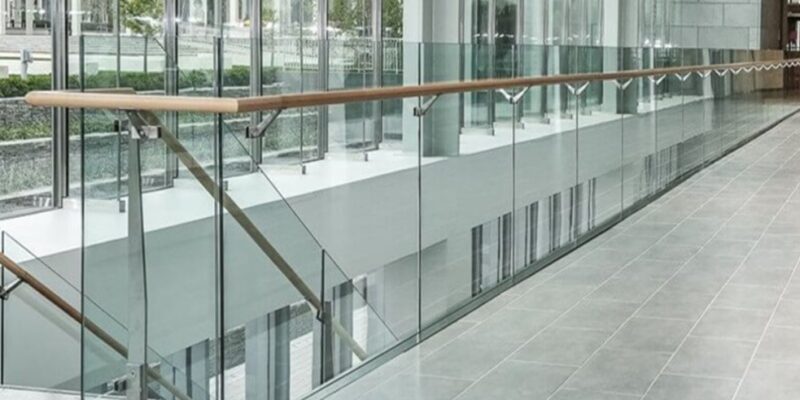Introduction
In the world of commercial architecture and design, balancing creativity with code compliance is paramount. This delicate dance is particularly evident in the realm of commercial balustrade design, where safety standards meet artistic expression. This blog delves into the intricacies of designing commercial balustrades to Australian standards, exploring the intersection of form, function, and regulatory compliance.
The Significance of Balustrade Design
Aesthetic Appeal Meets Safety
Commercial balustrades serve a dual purpose – they contribute to the aesthetic appeal of a space while ensuring the safety of occupants. Whether adorning a modern office building, a retail space, or a hospitality venue, the design of commercial balustrades plays a crucial role in defining the overall ambience and meeting safety regulations.
Defining Australian Standards
Australian Standards for balustrade design are established to guarantee the safety and structural integrity of these architectural elements. Compliance with these standards is not just a legal requirement but a commitment to creating spaces that prioritize the well-being of those who inhabit them.
Navigating Australian Standards in Balustrade Design
Understanding AS/NZS 1170
AS/NZS 1170 is the Australian Standard that outlines the structural design actions for buildings and other structures. This standard is fundamental in determining the loads that a balustrade must withstand, including factors such as wind, occupancy, and impact.
AS 1288: The Glass Code
For balustrades incorporating glass, AS 1288 is the guiding code. This standard stipulates the requirements for the selection and installation of glass in buildings, ensuring that the glass used in balustrades is of the appropriate thickness and safety level.
Balancing Compliance with Creativity
Material Selection
Balustrades can be crafted from various materials, including glass, steel, aluminium, and timber. While the choice of material contributes to the aesthetic appeal, it is crucial to ensure that the selected material complies with Australian Standards for strength and durability.
Designing for Functionality
Beyond aesthetics, the functionality of a balustrade is integral to its design. Considering factors such as accessibility, ease of maintenance, and resistance to environmental conditions ensures that the balustrade not only looks good but also performs its safety functions effectively.
Australian Standard Compliant Glass Balustrades
Transparency and Safety
Glass balustrades, when designed to Australian Standards, offer a seamless blend of transparency and safety. AS 1288 ensures that the glass used is of the right thickness and quality to withstand loads and potential impacts. This creates an open and visually appealing space without compromising safety.
Frameless Elegance
Frameless glass balustrades have gained popularity for their sleek and modern appearance. When designed to Australian Standards, these balustrades provide unobstructed views while meeting structural requirements, offering a perfect synergy of elegance and safety.
Steel and Aluminum Balustrades: A Structural Marvel
Robust and Stylish
Steel and aluminium balustrades, when designed in accordance with Australian Standards, offer a robust solution for commercial spaces. These materials provide a balance of strength and style, allowing for intricate designs without compromising on safety.
Powder Coating for Durability
To enhance the longevity of steel and aluminium balustrades, powder coating is often employed. This not only adds a layer of colour customization but also ensures that the material remains resistant to corrosion and environmental factors, complying with Australian Standards for durability.
Timber Balustrades: A Natural Aesthetic
Warmth and Character
Timber balustrades bring a natural warmth and character to commercial spaces. To meet Australian Standards, the timber must be selected and treated to withstand structural requirements and environmental conditions, ensuring longevity without compromising on aesthetics.
Balancing Traditional Charm with Modern Standards
Incorporating timber into balustrade design allows for a harmonious blend of traditional charm and modern safety standards. Proper treatment and finishing ensure that the timber maintains its integrity over time, meeting Australian Standards for structural performance.
Professional Expertise in Commercial Balustrade Design
Collaborating with Design Professionals
Navigating the intricacies of Australian Standards for commercial balustrade design requires collaboration with design professionals well-versed in both aesthetics and regulations. Engaging architects and designers with experience in commercial projects ensures a seamless integration of creativity and compliance.
Balustrade Engineering Specialists
For structures with complex design requirements, consulting with balustrade engineering specialists is crucial. These experts possess the technical knowledge to translate design concepts into structurally sound balustrades that meet or exceed Australian Standards.
Conclusion
In the realm of commercial architecture, the design of balustrades is a nuanced process that demands a delicate balance between creativity and compliance with Australian Standards. Whether crafting with glass, steel, aluminium, or timber, the commitment to creating aesthetically pleasing yet structurally sound balustrades is paramount. As architects, designers, and engineers continue to push the boundaries of innovation, the harmonious integration of form and function remains at the core of designing commercial balustrades to Australian Standards. In doing so, we not only create visually stunning spaces but also uphold a commitment to the safety and well-being of those who inhabit them.













Comments